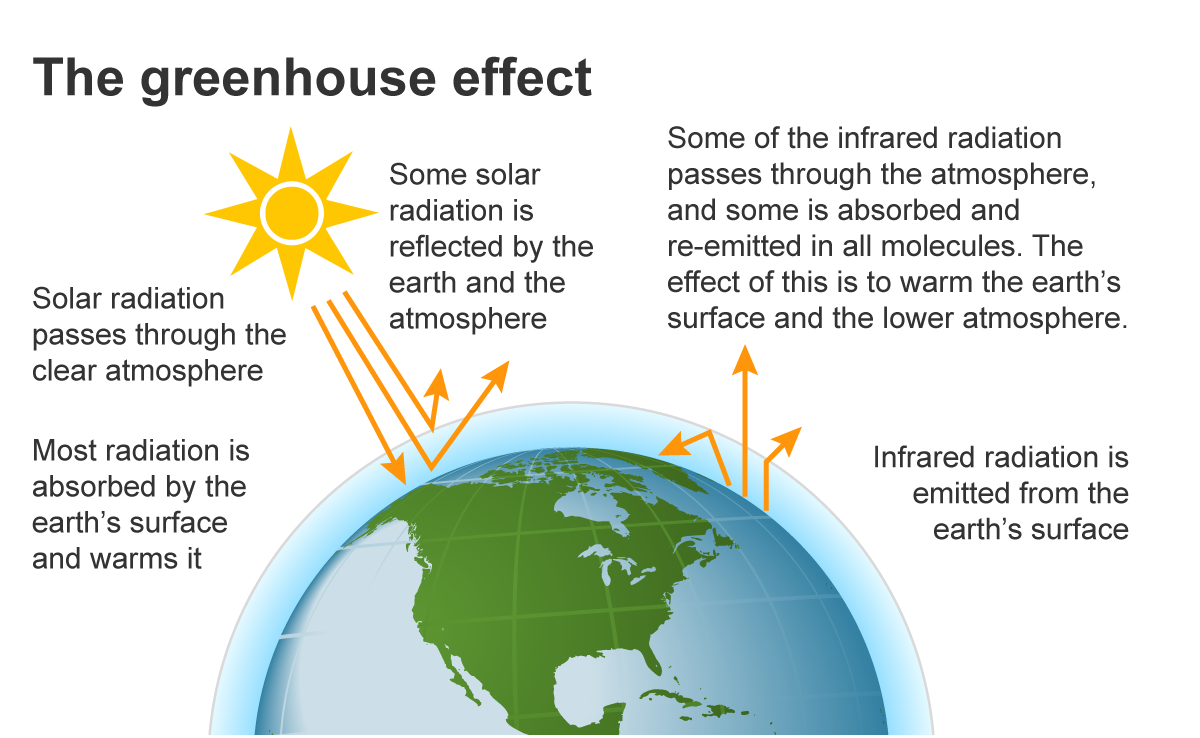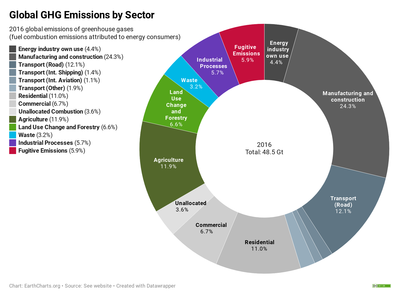Greenhouse gases refer to any number of gases including carbon dioxide nitrous oxide ozone methane fluorinted gases and others. Carbon dioxide enters the atmosphere through burning fossil fuels coal natural gas and oil.
 Greenhouse Gases U S Energy Information Administration Eia
Greenhouse Gases U S Energy Information Administration Eia
These greenhouse gases allow the suns rays to pass through and warm the planet but prevent this warmth from escaping the atmosphere into space.

What is greenhouse emissions. Greenhouse gas emissions the majority are related to energy consumption and most of those are carbon dioxide. To avoid the worst climate impacts global greenhouse gas GHG emissions will need to drop by half by 2030 and reach net-zero around mid-century. Greenhouse gas any gas capable of absorbing infrared radiation net heat energy emitted from Earths surface and reradiating it back to Earths surface thus contributing to the phenomenon known as the greenhouse effect.
Transportation 29 percent of 2019 greenhouse gas emissions The transportation sector generates the largest share of. Much like the glass of a greenhouse gases in Earths atmosphere sustain life by trapping the suns heat. Formerly used as a refrigerant and as a propellant in aerosol cans.
Without them Earth would be too cold to sustain life as we know it. Humanitys enormous emissions of greenhouse gases are shrinking the stratosphere a new study has revealed. Greenhouse gases trap heat from the sun and warm the planets surface.
For the purposes of reporting greenhouse gas emissions are allocated into a small number of broad high level sectors known as National Communication sectors which are as follows. The latest research is clear. Some of this is a natural process but gases created by human activity are trapping more heat in the atmosphere raising the temperature and causing global warming or climate change.
Agricultural soils 41. Methane is emitted during the production and transport of coal natural gas and oil. CFC chlorofluorocarbon - a fluorocarbon with chlorine.
The greenhouse effect is the way in which heat is trapped close to the surface of the Earth by greenhouse gases These heat-trapping gases can be thought of as a blanket wrapped around the Earth which keeps it toastier than it would be without them. 1 This link between global temperatures and greenhouse gas concentrations especially CO 2 has been true throughout Earths history. These gases are therefore known as greenhouse gases GHG.
The primary sources of greenhouse gas emissions in the United States are. The chlorine in CFCs causes depletion of atmospheric ozone. Greenhouse gases include carbon dioxide methane and nitrous oxides.
Electricity production 25 percent of 2019 greenhouse gas emissions Electricity production generates. Greenhouse emission - a gas that contributes to the greenhouse effect by absorbing infrared radiation. This includes emissions from agricultural soils for all agricultural products including food for direct human consumption animal feed biofuels and other non-food crops such as tobacco and cotton.
Nitrous oxide a strong greenhouse gas is produced when synthetic nitrogen fertilizers are applied to soils. Human emissions of carbon dioxide and other greenhouse gases are a primary driver of climate change and present one of the worlds most pressing challenges. Carbon dioxide methane and water vapor are the most important greenhouse gases.
This is when heat and energy from the sun get trapped in the Earths atmosphere. Overview of Greenhouse Gases Carbon dioxide CO2. The thickness of the atmospheric layer has contracted by 400 metres since the 1980s.
